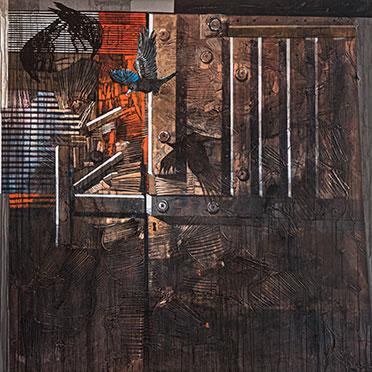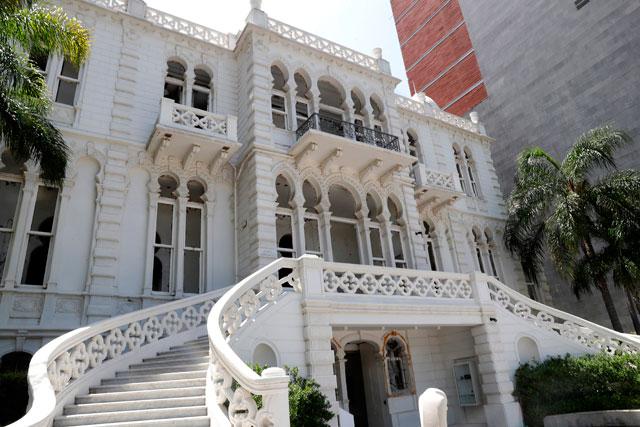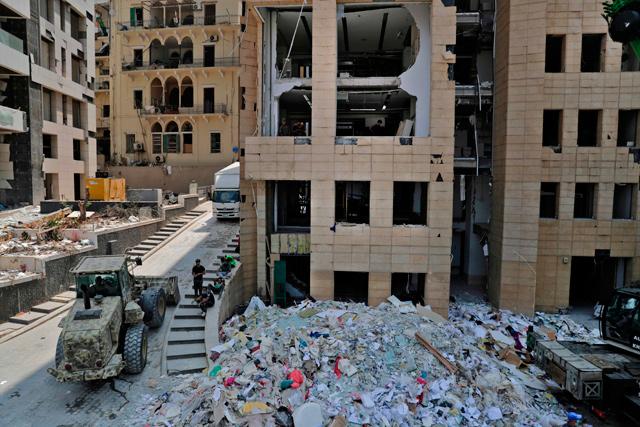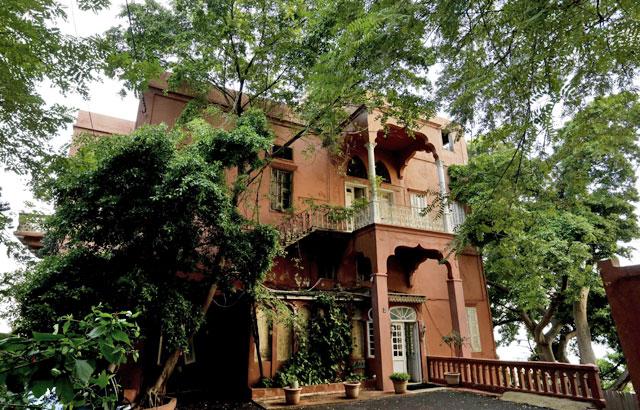You are here
‘Doors 48’ — haunting images that keep alive a memory
By Ica Wahbeh - Oct 06,2019 - Last updated at Oct 06,2019

A work by Mohammad Al Jaloos on display at CAB Art Gallery (Photo courtesy of CAB Art Gallery)
AMMAN — Richly textured, dark, powerful imagery is Mohammad Al Jaloos' latest creation and subject of the exhibition titled "Doors 48"; doors of houses Palestinians were forced to leave that ominous year, most never to go back.
"The world, Israel, wants us to forget about 1948," says the artist, "but the keys are still with us."
These often rusty metal objects have become a symbol for the refugees made by the Nakbah: Of ownership, of steadfastness, of hope that return will be possible one day, of the existence of a people dispossessed and whose homeland, Palestine, is gradually becoming a mythical place the new generation has not seen and the old one will not return to.
Spurred by stories of a grandmother who lived to the venerable age of "over 100" and who had left her house — food cooking on the stove —with the rest of the family, taking with them next to nothing, but hiding the key in her embroidered dress, Al Jaloos has been working for the past three years to create haunting paintings that attempt to rekindle memories "in a political context that attempts to make us forget" about the injustice visited upon his people.
His doors, somehow abstract compositions that nevertheless clearly depict the intended subject even when vaguely rendered, are boarded over with wooden planks nailed — like the memories of their owners — across or crisscrossing, suggesting desertion and dereliction, and a futile attempt at safeguarding a precious property.
At times clearly delineated by sharp contours, at others hazy, like the memories of what was once home, Al Jaloos' doors are often accompanied by crows; predatory birds associated in many cultures with darkness and misfortune.
These omens of bad tidings and bringers of bad luck are symbols of the ugly occupation; they linger by the doors, sinister, forbidding, scary "guards" of homesteads that have long been lost to colonisers.
The door might not always be obvious, but the key hole is visible at all times. As if the door were patiently waiting for the possessor of the key to unlock it, for the rightful owner of the house to return. It might be seen as a glimmer of hope — also suggested by the slivers of bright colour piercing the mostly dark canvas — put out, however, by the bleak hues that predominate the paintings.
The works, mixed media and acrylic on canvas, are mostly in dark and earthen colours; when they are lighter — all is not gloomy in this artist's world — they are uplifting and calming, reminding of times when life was idyllic, unthreatened, normal.
The almost three-dimensional canvases tempt one to touch them to feel the wood of the doors, and the plaster and ridges on the walls. One also feels like trying to open the doors to see what is inside: the left-behind belongings, the unfinished meals, prized possessions and knick-knacks, which were all once part of the owners' lives that were cruelly shattered by an occupation that persists despite countless UN resolutions, its illegitimacy and the human suffering it engenders.
Al Jaloos, like many other artists, documents his time and holds a cause dear to his heart. In this case, like in others before, he brings to the fore his ancestral land, keeping alive a memory that should not be allowed to be extinguished.
"I try to express the metaphorical concept of the door that [was] left because of blood, fire and weapons causing death. There, in Palestine, doors... people left in 1948 without farewell, based on their belief that they will return within days at most."
Doors that witnessed his people's "joys and sorrows"... "the doors of my father and grandfather, the doors of ‘48".
His yearned-for doors, another testimony to the talent and dedication of this celebrated artist with works exhibited in countless countries, can be seen at CAB Art Gallery until November 2.
Related Articles
BEIRUT — The monster explosion that levelled Beirut's port darkened the Lebanese capital's future but also blasted its past into oblivion, r
BEIRUT — Tanya can't be alone in a room. Carla, for days, thought a war was starting.
Like a mirage in the middle of Beirut's high-rise seafront, the exquisite mansion is a lonely reminder of this city's romantic past.

















